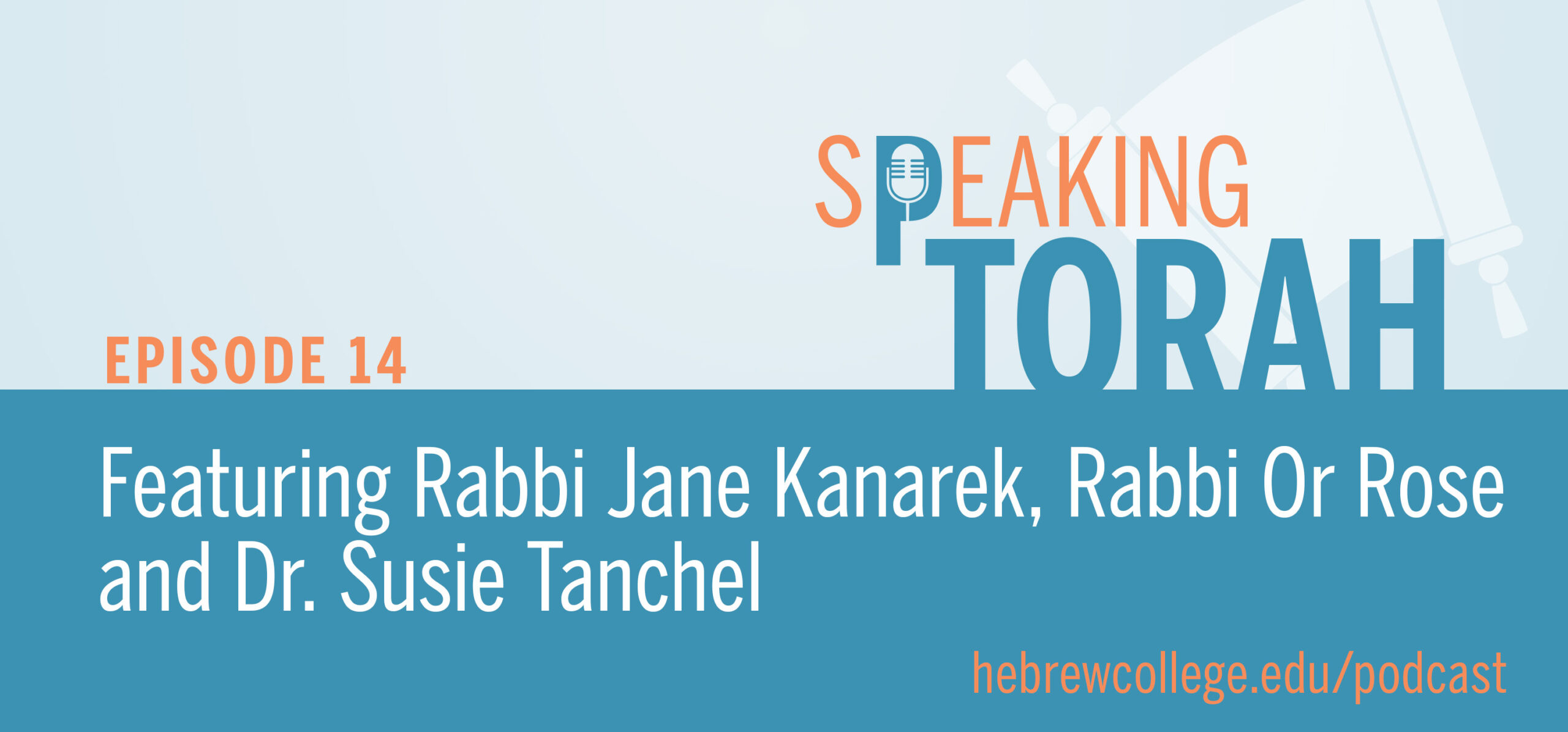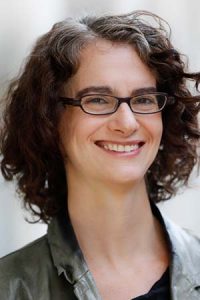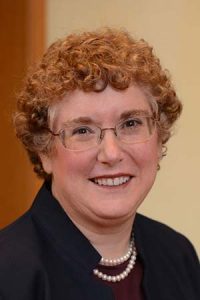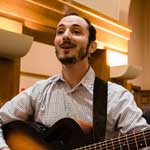Podcast Ep #14: Educating for Hope Across Difference

When they internalize this process of dialogue with one another and with the Talmud, what I see is joy emerge. What I see is smiles in the classroom at the text and towards one another. And I hope and I trust that out of that joy also comes hope for my students, hope for being able to listen to one another, and equally important, hope that they may learn and find joy in listening to this ancient text that represents something beyond their own selves.
– Rabbi Jane Kanarek
Over recent years, the institution of teaching and the process of open questioning and discussion has been widely debated. Throughout today’s episode, you will hear how the importance of openness often leads to struggle and discomfort, but that is where the joy of discovery, creativity, and hope must spring from.
Rabbi Jane Kanarek is Associate Professor of Rabbinics and Associate Dean of Academic Development and Advising at Hebrew College. Rabbi Or Rose is the Founding Director of the Betty Ann Greenbaum Miller Center for Interreligious Learning and Leadership of Hebrew College. Dr. Susie Tanchel is Hebrew College Vice President and former Head of School at JCDS, Boston’s Jewish Community Day School.
Tune in for this episode to discover Hebrew College’s work in creating community and hope across difference. Our panelists discuss what hope means to them, practices to help identify common ground and acknowledge differences, and insights into building a world where all voices are heard.
What You’ll Discover from this Episode:
- Why now is the time for Hebrew College to lift up its commitment to educate for hope.
- What the idea of complex hope means to Dr. Susie Tanchel, and the role education has to play in leading us through difficulty.
- Why Rabbi Jane Kanarek believes that Talmud is a book through which hope can be taught.
- How we can allow the texts to speak to us, and how we can respond from knowledge of who we are and the moment in which we currently live.
- Why the deepest, highest form of love allows for intimacy without annihilating difference.
- Hebrew College’s work in building a community where all voices are heard and embraced.
Featured on this Episode:




A special thank you for this episode’s musical contributions:

Jackson is an Ordination Candidate at the Rabbinical School of Hebrew College in Newton, MA. He grew up at Congregation Rodef Sholom in San Rafael, CA where he cultivated a love of Judaism, embolden with music, spirituality and justice.
Esa Einai (Psalm 121:1)
Music by Jackson Mercer
Guitar and Melody by Jackson Mercer
Harmonies by Cantor Rosalie Will, Ilana Sandberg, Rabbi Micah Shapiro, Rabbi Josh Warshawsky, Noah Diamondstein, Ryan Leszner, Eliana Light.
Ki Me’Olam (Words from Hallel)
:כִ י מֵ עוֹלָ ם וְ עַ ד עוֹלָ ם אַ תָ ה אֵ ל
Before time and forever You are God, beyond what we can possibly know.
Music by: Rabbi Micah Shapiro`17
Produced by: Rabbi Micah Shapiro and Eitan Kantor
Musicans
Yoni Battat ∙ Oud
Rabbi Minna Bromberg`10 ∙ Vocals
Leah Carnow ∙ Vocals
Rafi Ellenson ∙ Percussion
Rabbi David Fainsilber`14 ∙ Vocals
Rabbi Mónica Gomery`17 ∙ Vocals
Cantor Becky Khitrik`14 ∙ Clarinet, Vocals
Rabbi Arielle Lekach-Rosenberg`17 ∙ Vocals
Ryan Leszner ∙ Vocals
Jackson Mercer ∙ Vocals
Cantor Dara Rosenblatt`18 ∙ Vocals
Rabbi Micah Shapiro`17 ∙ Guitar, Vocals
Rabbi Jessica Lowenthal: I’m your host, Rabbi Jessica Lowenthal, spiritual leader of Temple Beth Shalom in Melrose, Massachusetts and 2019 graduate of Hebrew College filling in for our regular hist Rabbi Jeff Summit. In this podcast, Jewish leaders from around the world read essays from Hebrew College alumni about how Torah can help us navigate the most pressing issues of our time. Together, we explore the ways Torah could help us approach the world with creativity, healing, and hope.
This week, we’re pleased to share a discussion between Rabbi Jane Kanarek, Rabbi Or Rose, and Dr. Susie Tanchel from Hebrew College’s centennial celebration on June 2nd 2022 on the topic educating for hope.
Over the last few years, the institution of teaching and the process of open questioning and discussion has been widely debated. Throughout this discussion, you will hear how the importance of openness often leads to struggle and discomfort, but that is where the joy of discovery, creativity, and hope must spring from.
Rabbi Jane Kanarek is Associate Professor of Rabbinics and Associate Dean of Academic Development and Advising at Hebrew College. She is the author of Biblical Narrative and the Formation of Rabbinic Law and the coeditor of Learning to Read Talmud: What it Looks Like and How It Happens, and Motherhood in the Jewish Cultural Imagination, both of which were finalists for the National Jewish Book Awards.
Rabbi Or Rose is the Founding Director of the Betty Ann Greenbaum Miller Center for Interreligious Learning and Leadership of Hebrew College. Before assuming this position in 2016, he worked at Hebrew College for over a decade, including serving as a Founding Faculty Member and Associate Dean of the Rabbinical School.
Dr. Susie Tanchel joined Hebrew College in 2020 after serving as Head of School at JCDS, Boston’s Jewish Community Day School. During her nine-year tenure at JCDS, Tanchel guided the school to preeminence as a national model of excellence in pluralistic Jewish education. She was a recipient of the 2018 Covenant Award for Jewish Educators.
—
Dr. Susie Tanchel: Hi, everyone. My name is Susie Tanchel, and I am honored to be the Vice President of Hebrew College. To my right is Rabbi Jane Kanarek, who is the Associate Dean of the Rabbinical School and a Professor of Talmud. To my left is Or Rose, the Founding Director of the Miller Center at Hebrew College. Hi Jane and Or.
Rabbi Or Rose: Hi, Susie.
Dr. Susie Tanchel: So, I’m excited to be joining in with you both on this conversation about educating for hope across difference. Now hope might strike some of us, in this particular moment, as kind of an odd choice.
We – and I don’t just mean the three of us – have been having a bit of a hard time lately. Events in the world, events across the United States, events more locally have been challenging. And I don’t just mean COVID.
In some parts, there is an attack on the process of education itself. But perhaps, that is precisely why, in this very moment, we lift up our commitment to educating for hope. And I’m not thinking about a willfully blind optimism, but rather a more grounded hope.
I recently read the words of Parker Palmer who wrote, “Hope is the place where joy meets struggle.” What resonates so deeply for me is the idea of a complex kind of hope. And it feels like an apt description of the educational process.
When education is at its best, it is certainly about joy and struggle, what I like to call a productive disequilibrium. Just the right amount of discomfort pushes us and creates an opening, a possibility for something new to emerge.
Since the verb to educate comes from the Latin educere, which means to lead out, perhaps teaching is about us leading one another out of our current place, but into an unspecified destination.
Rather, we are to see what emerges. We are to trust a process as it unfolds. Across all our programs, teens and adults, clergy and educators, we share a common pedagogy of cultivating minds that seek to go deeper, of nurturing compassionate hearts that build community, and of developing attuned ears that listen to the voice of the text, the voice of our chevruta, and to our own inner voices.
This process of complex hope, born of joy and struggle, leads to possibility and maybe even transformation.
Rabbi Jane Kanarek: Thank you, Susie. When we were talking about what we wanted to share, Susie gave us this quote that she mentioned, hope is the place where joy meets struggle. I’m not going to start there, but I’m going to circle back to hope is the place where joy meets struggle.
I teach Talmud. It’s a sacred text, our sacred text. And it’s a text, as we all know, of multiple opinions. It’s a creative book and I want to argue that it’s also a book through which hope can be taught.
I’m going to move back a little further in time though to when I was in Rabbinical school at the Jewish Theological Seminary. I was sitting in the cafeteria and I was talking with a friend of mine, who is now a Rabbi, Rabbi Dianne Cohler-Esses. And we were talking about the laws of Niddah, the laws of menstruation.
I don’t remember exactly what I was saying, but I do know it was something very, very feminist and very, very angry, and very,- very anti these laws and whatever they said.
And at some point, Dianne just sat back and said to me, “Jane, but do you ever let the text talk to you? Jane, do you ever let the Rabbis talk to you?” And she stopped me in my tracks, and it has been that sentence that I have taken with me as an educator. It is how I see myself as a teacher.
So, what is my task? I see it as twofold. The first is to help my students learn to let our ancient texts, the texts of the Talmud speak to them from its very old – and even if I dare so – strange place.
The second task that I see myself though is to let my students, and enable them, to speak back to the Talmud with everything that they know about who they are and from the moment we live in now.
So, to use the words of the anthropologist J.Z. Smith, “It is to help my students make what is familiar to them strange and what is strange to them a bit familiar.”
This is a process of creating a two-way dialogue. It’s a dialogue that creates relationship between student and Talmud, and Talmud and student. And then equally crucially, it’s a process that also helps to create relationships between the students.
Our students are from a range of different backgrounds, different perspectives. They bring different selves to the Talmud and to the classroom. They know different things.
This process isn’t easy and this is where I get to struggle. It can be a struggle, not just with the Hebrew and Aramaic of the Talmud, not just with its sometimes-foreign language, and not sometimes even just with its ethically troubling texts. But it can also be a struggle to learn to listen to one another.
But when they do that, when they internalize this process of dialogue with one another and with the Talmud, what I see is joy emerge. What I see is smiles in the classroom at the text and towards one another. And I hope and I trust that out of that joy also comes hope for my students, hope for being able to listen to one another, and equally important, hope that they may learn and find joy in listening to this ancient text that represents something beyond their own selves.
Rabbi Or Rose: Amen. In the time that I have to contribute to this conversation, I wanted to share a text. As you all know, on Saturday night, we will celebrate the Festival of Shavuot, the celebration not only of the peak of the spring season, but also, according to tradition, the giving of the Torah at Mount Sinai.
And for generations, interpreters have asked, what happened at Sinai? What was seen? What was heard? What was internalized?
I want to share one answer from a 19th century source that has moved me, both as a student of Judaism and as a Rabbi that’s regularly involved with interreligious and cross-cultural work.
Rabbi Menachem Mendel of Rimanov said that the only thing that was revealed directly by God at Sinai to the Children of Israel was the letter aleph from the first word of the 10 Commandments ano-khi. But what does an aleph sound like when it stands alone? It is, of course, pregnant with meaning. But then, it is left to each and every one of us individually and communally to interpret what that aleph means.
So then, his student, Naftali Zvi of Ropshitz asks, “If aleph is what they heard, what did they see?” And he said, “My master was right. It was just an aleph.” But then, he said, “What can you see? What can you hear? What can you understand if you look at that aleph anew? Deconstruct that aleph and you’ll see two yuds and a vav. Two yuds and a vav looks a lot like a human face.
So, what was seen at Sinai? People looked to the left and to the right and saw each other’s faces and understood that, out of the depths of that aleph of ano-khi], each of us is at once interconnected and each of us also has a unique Torah to bring forth.
And so, picking up on my colleague Susie’s love for Mystics, I started with a Hassidic Mystic and I’ll end with a Quaker Mystic. The highest form of love allows for intimacy without the annihilation of difference. Thank you.
Dr Susie Tanchel: So, we’re each going to take just a minute to share some final thoughts. And I actually wanted to read to you from an essay that a teen, a member of our teen Beit Midrash program wrote in their college essay.
“We take all Talmud texts and dictionaries and move closer to our [inaudible 0:12:54.3] partners and begin to read. Typically, it doesn’t take long before we come to our first of many disagreements. One of us argues for a literal interpretation of the text while the other leans toward a figurative one. One of us agrees with the Talmud scholars, but the others prefer a modern reading.
We each explain our differing perspectives, backing them up with historical or textural context, rabbinical commentary, our own experiences, and even current events. We often find consensus on some questions while agreeing to disagree on others.
Fortunately…” this is a teen, remember, “Fortunately, uniting on one answer is not a requirement of chevruta learning. Our goal is to learn from one another, listen to each other’s perspectives, and respect and appreciate our varying options.
When we achieve these goals, we not only learn more, we also form a strong community in which all voices are heard and embraced. Before joining team Beit Midrash, I felt alone. The students here took me under their wings, supported me, and through our shared experiences and mutual understanding, gave me a sense of belonging.
This made sense. The Beit Midrash is the perfect environment in other parts of our lives. After all, chevruta learning centers around listening, openness, support, and respect. This transformed my life. I felt as if I belonged.”
Rabbi Jane Kanarek: When people ask me what Hebrew College is, I say we are a laboratory for creating community across difference. That is the core of my community. Over the Talmud, I hope that my students will learn to listen to each other without arrogance, with certainty that they are right about some things and with certainty that they are wrong about other things.
If we can cultivate that sense of respect, that certainty in rightness, in wrongness and in rightness, and learning through community, then I believe we will have done something to help our Jewish world and to help this country to learn how to create community across difference.
Rabbi Or Rose: Lest you think the Mystical teaching a few moments ago is simply theory. One source of hope for me was working with teens, one from Roxbury, the other from Brookline, one African American Christian, the other white and Jewish.
Through our COVID Commission, a moment in which over Zoom they had the opportunity to study as a chevruta, in which one shared with the other the realities of food insecurity and what it means to wait in line for two hours a week to get basic necessities. And the other shared about alcoholism and his responsibility for caring for his father who, in the midst of COVID, had descended into a very dark and dangerous place.
In that moment, when they saw each other and heard each other, that was the aleph of the face. That was Torah.
Dr. Susie Tanchel: Thank you both so very much.
—
Rabbi Jessica Lowenthal: Thank you for joining us for this episode of Speaking Torah. We want to thank Emily Hoadley for our logo and Hebrew College Rabbinical Student and composer Jackson Mercer for our theme music “Esa Einai.” To learn more about Hebrew College, please visit hebrewcollege.edu/podcast and remember to subscribe, like, and rate Speaking Torah wherever you listen to podcasts.
We’ll leave you this week with “Ki Me O’lam” with words from Hallel, “Before time and forever, you are the source of life beyond what we can possibly know.” כִ י מֵ עוֹלָ ם וְ עַ ד עוֹלָ ם אַ תָ ה אֵ ל: This inspirational piece was written by Hebrew College 2017 alumnus Rabbi Micah Shapiro and performed by Hebrew College Rabbinical and Cantorial alumni and students at the college’s centennial celebration. I’m your host Rabbi Jessica Lowenthal. Thank you for joining us on Speaking Torah.
Enjoy the Show?
- Don’t miss an episode, follow the podcast on Spotify, Apple Podcasts, Stitcher, or RSS.
- Leave us a review in Apple Podcasts.


